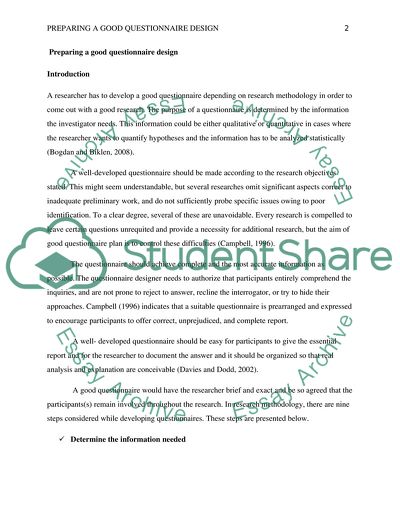Cite this document
(The Concept of Questionnaire Design by Highlighting the Major Steps in Essay, n.d.)
The Concept of Questionnaire Design by Highlighting the Major Steps in Essay. Retrieved from https://studentshare.org/education/1793430-perparing-a-good-questionnaire-design
The Concept of Questionnaire Design by Highlighting the Major Steps in Essay. Retrieved from https://studentshare.org/education/1793430-perparing-a-good-questionnaire-design
(The Concept of Questionnaire Design by Highlighting the Major Steps in Essay)
The Concept of Questionnaire Design by Highlighting the Major Steps in Essay. https://studentshare.org/education/1793430-perparing-a-good-questionnaire-design.
The Concept of Questionnaire Design by Highlighting the Major Steps in Essay. https://studentshare.org/education/1793430-perparing-a-good-questionnaire-design.
“The Concept of Questionnaire Design by Highlighting the Major Steps in Essay”, n.d. https://studentshare.org/education/1793430-perparing-a-good-questionnaire-design.


